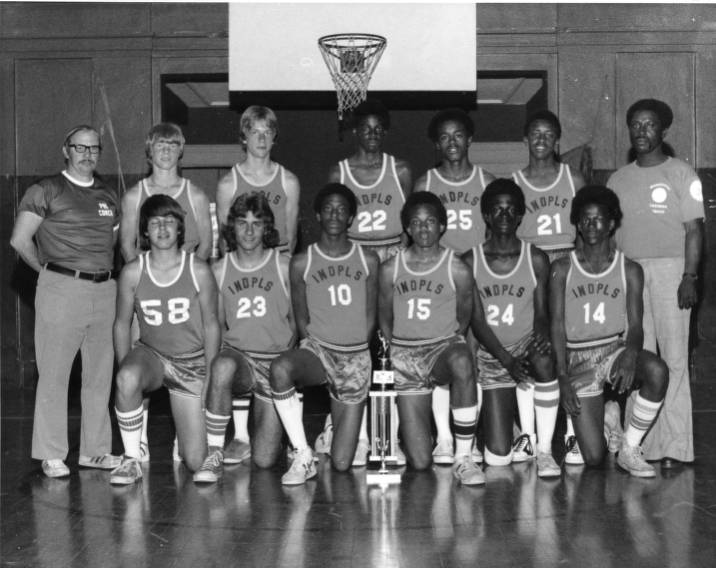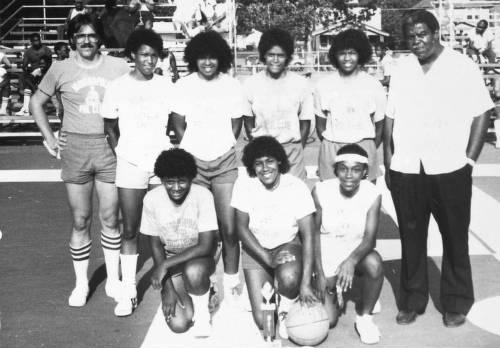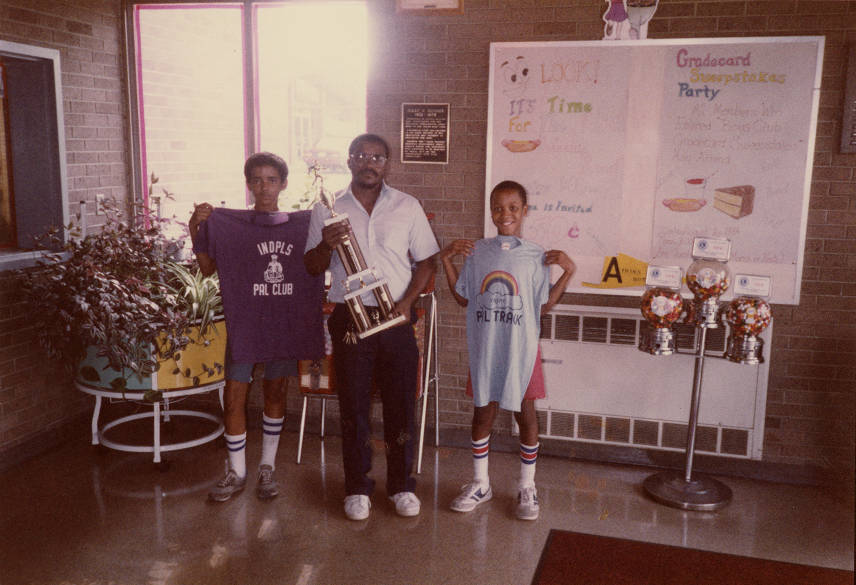Officer Forrest Higgs organized the first Police Athletic League (PAL) club at Rhodius Park (southwestern Indianapolis) in 1941 as part of a new crime prevention program. The of Indianapolis underwrote the project during its first year, but, in 1942, it was taken over by the Indianapolis Police Department’s Juvenile Aid Division. PAL clubs sponsored athletic leagues for boys ages 6 to 18.

In the 1940s, PAL played a significant role in establishing organized sports activities for African American youth who lived on the Indianapolis near westside. In 1940, Indianapolis Police Department officer and resident Anthony Watkins started neighborhood basketball and football leagues at the Dust Bowl, a dirt court that sat on Colton Street at the south end of the segregated Public Works Administration (PWA) Black housing community which opened in February 1938. The leagues became the Lockefield PAL in 1944. Officer James “Bruiser” Gaines of PAL took over the program and built on Watkins’ recreational model, and , later the coach of the mid-1950s basketball state champions, joined him in his efforts.
Crowe then was a teacher at the segregated Indianapolis Public School No. 17, located at the corner of 11th and West streets, which lacked after-school recreational activities. As part of Lockefield PAL, Crowe’s intramural programs filled this gap for youth providing training in basketball skills, sportsmanship, and teamwork.

Gaines established the as the culmination of the Lockefield PAL programming in basketball in 1948. Many of the best players on Crowe’s Attucks basketball teams of the 1950s, including , Hallie Bryant, and Oscar Robinson, got their start in Crowe’s intramural program and played in the tournament, which survives as part of .
By 1947, Indianapolis had nine PAL clubs with a full-time police officer assigned to supervise them and annual participation of nearly 5,000 boys. Although designed for boys, policewomen began to participate in the program in the 1950s.
The PAL clubs split with the Juvenile Aid unit in 1952. As a result, the Indianapolis Police Department created a PAL board of directors and assigned an officer to each of the nine PAL clubs. The organization grew rapidly over the next decade. By 1963, there were 13 PAL centers serving 10,000 regular members. Monthly attendance at each center exceeded 30,000.
In 1972, differences between PAL and the led to the removal of the 11 PAL centers from city parks to five public housing projects. PAL continued to operate centers in the city’s public housing projects through the rest of the 1970s. In 1975, Judy Callahan, a policewoman, began working full-time organizing softball, camping, volleyball, arts and crafts, and track and field events for girls.

In the 1980s and 1990s PAL operated seven centers located in city schools, public housing projects, and community centers. The centers provided organized sports and other activities to over 2,000 children each year. The Indianapolis Police Department employed 10 staff members, and the PAL board of directors provided an executive director.
PAL struggled in the first decades of the 2000s. In 2019, the asked the Indy Public Safety Foundation, a 501(c)3 nonprofit that works to raise the funds necessary to provide services and equipment not included in public safety department budgets, to assume administration and oversight of the program. Within the first year, the foundation invested over $250,000 in the league.
Sports such as basketball, baseball, football, and cheerleading-dance continue to be a core focus of programming, but other activities have developed. These programs include the IMPD Care mentoring program for youth ages 12 to 18. The Juvenile Justice Jeopardy Program teaches youth how to interact safely with law enforcement and “to correct misconceptions about the juvenile and criminal systems.” The Gang Resistance Education and Training (G.R.E.A.T.) program works to prevent gang violence and participation, and the Healthy Reasons program is designed to prevent drug abuse.
The organization, now known as the Indy Police Athletic & Activities League, has served over 40,000 youth since its inception. The JTV Center (named for early Indianapolis African American attorney , located in the neighborhood serves as the main location for its activities.

Help improve this entry
Contribute information, offer corrections, suggest images.
You can also recommend new entries related to this topic.